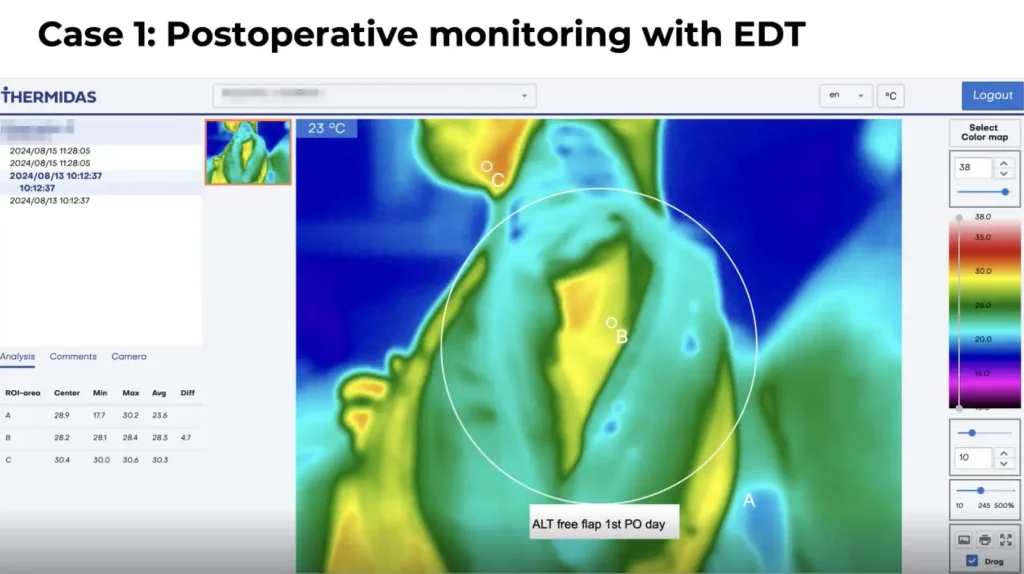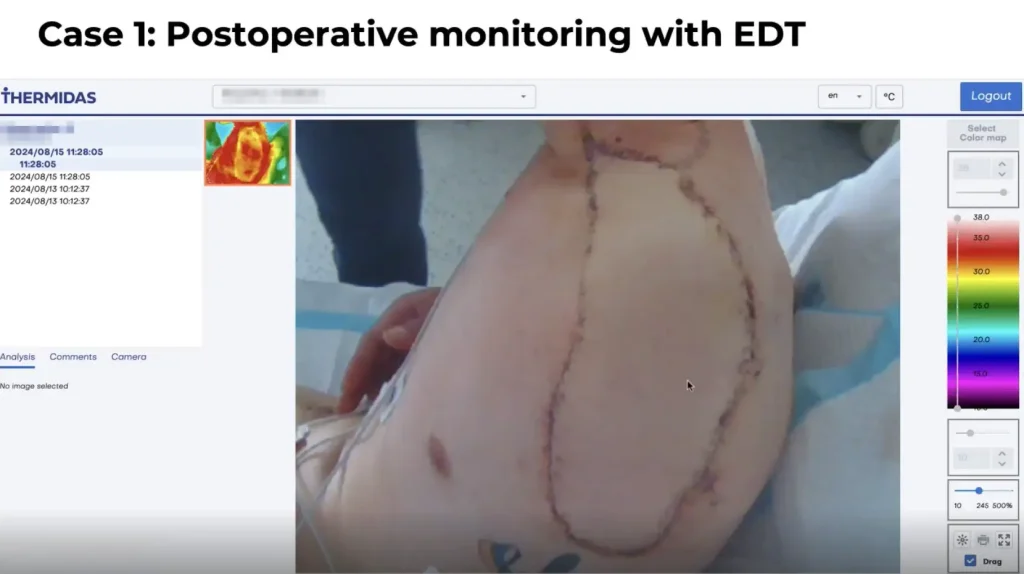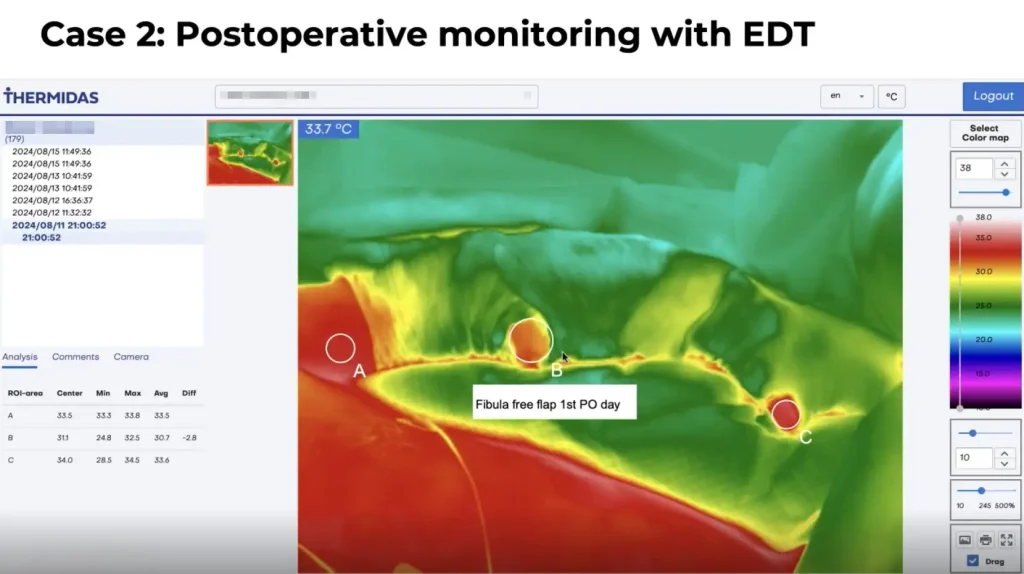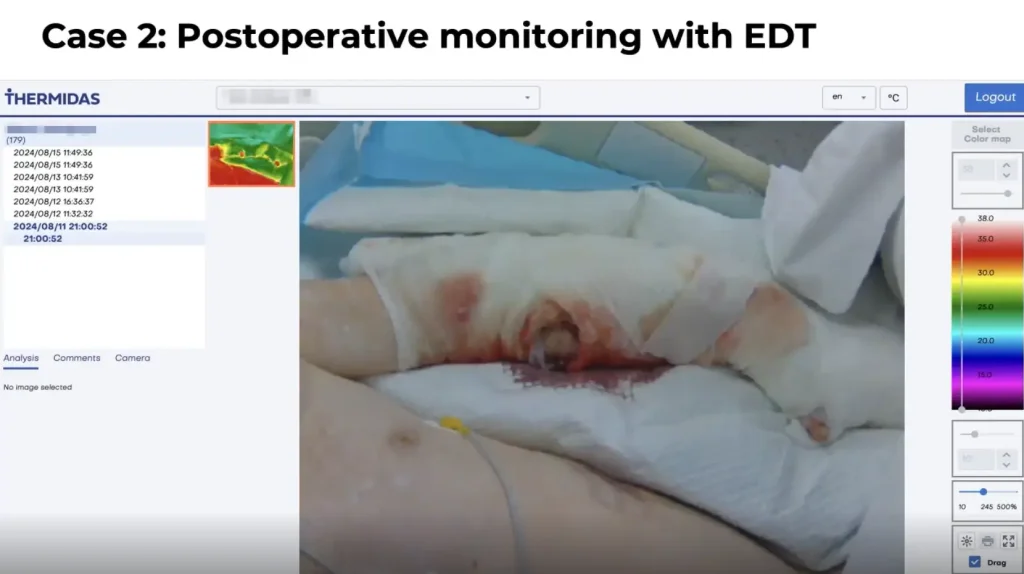Dr. Ihor Stoianovskyi presented the Superhumans Center’s integration of thermography in reconstructive plastic surgery, particularly for war victims in Ukraine. The Centre applies this technology primarily for preoperative planning, intraoperative adjustments, and postoperative monitoring of flaps in reconstructive procedures.
By using thermography, the Center can identify perforator blood vessels critical for flap survival, optimize surgical planning, and ensure effective postoperative monitoring to detect complications like poor vascularization, infection, or tissue necrosis.
“Real-time thermographic data can guide surgical adjustments and postoperative care.”
The technology has proven especially useful in procedures involving free flaps, where blood supply is crucial. It aids in non-invasive and rapid assessments, ensuring patient comfort and reducing risks. Dr. Stoianovskyi highlighted the importance of integrating thermography with other diagnostic tools, such as Doppler ultrasound, to enhance accuracy.
Key Points from Dr. Stoianovskyi’s Presentation
Applications of Thermography:
Preoperative planning for mapping perforator blood vessels, improving flap design and success rates.
Postoperative monitoring for early detection of vascular issues, infections, or necrosis, and monitoring donor sites for complications.
Integration into flap monitoring protocols for regular, precise temperature assessments of free flaps.
Advantages:
- Non-invasive, painless, and rapid assessments.
- High sensitivity to temperature differences (as small as 0.1 °C).
- Enhanced documentation of surgical procedures and monitoring results.
- Helpful in early intervention for complications, improving patient outcomes.
Clinical case highlights
- Successful identification and monitoring of free flaps for arm and bone reconstruction.
- Early detection of necrosis in donor sites and rapid intervention to prevent complications.
- Use of thermography in complex reconstructive surgeries, adapting to patient-specific needs.



